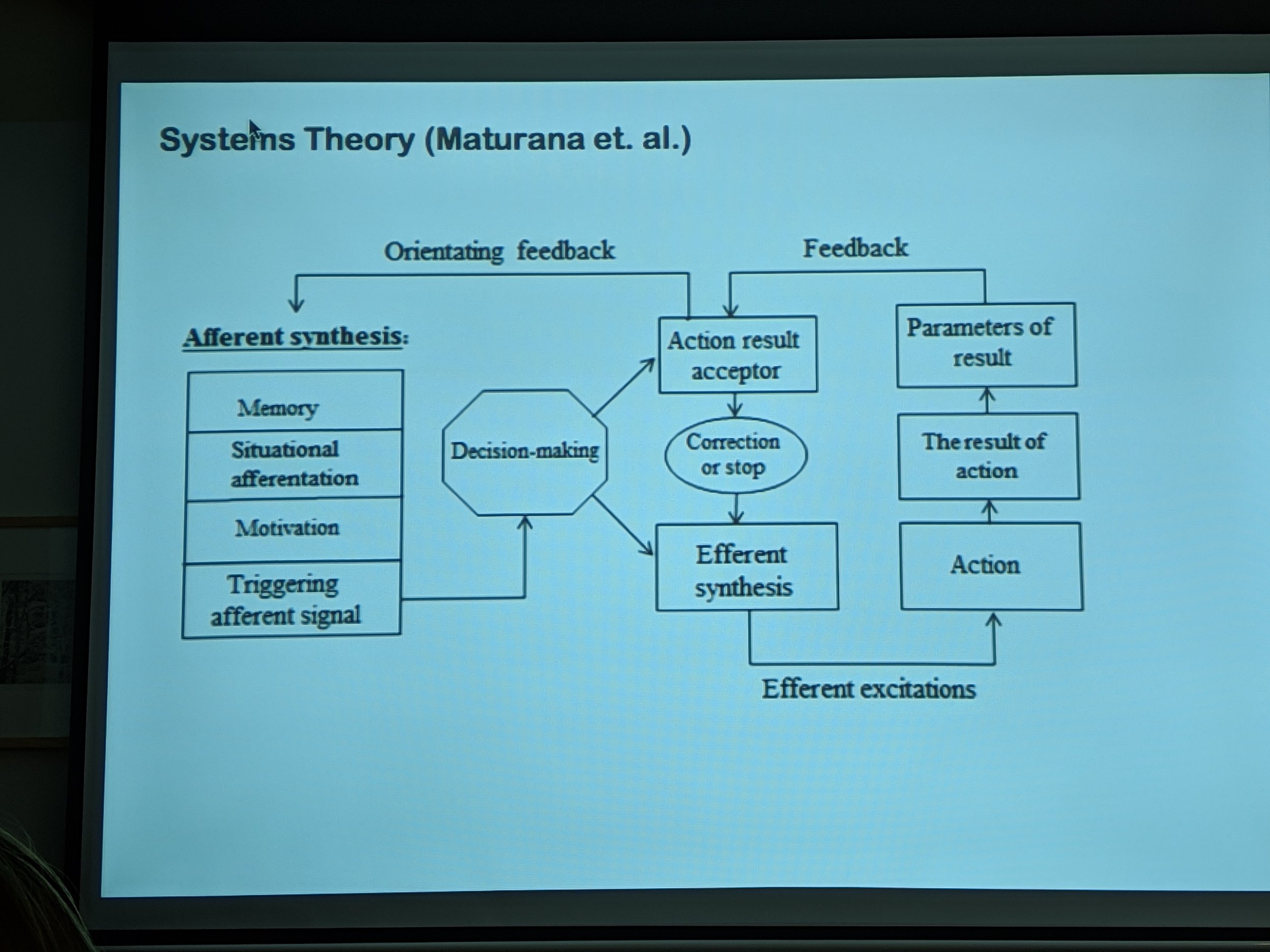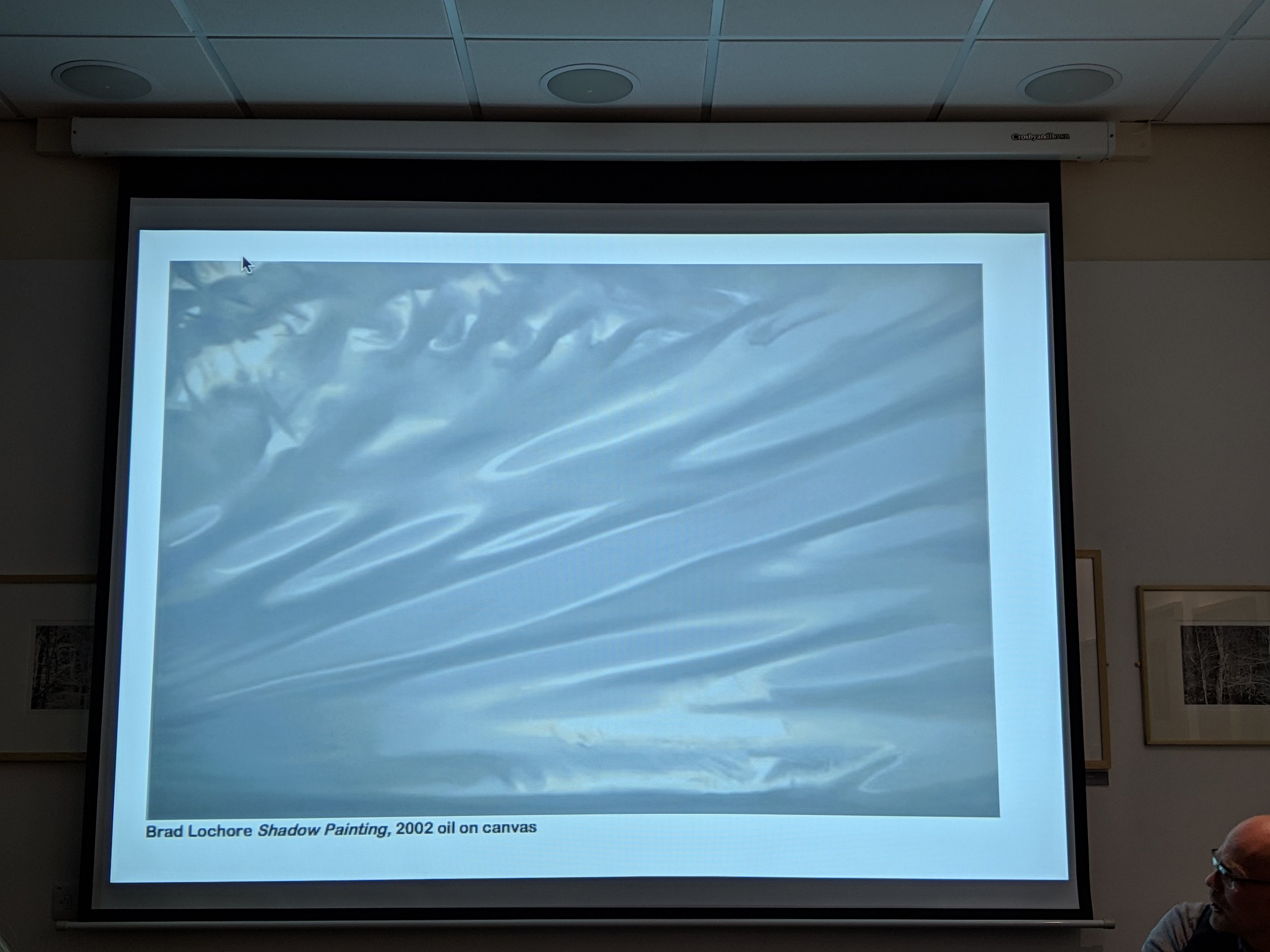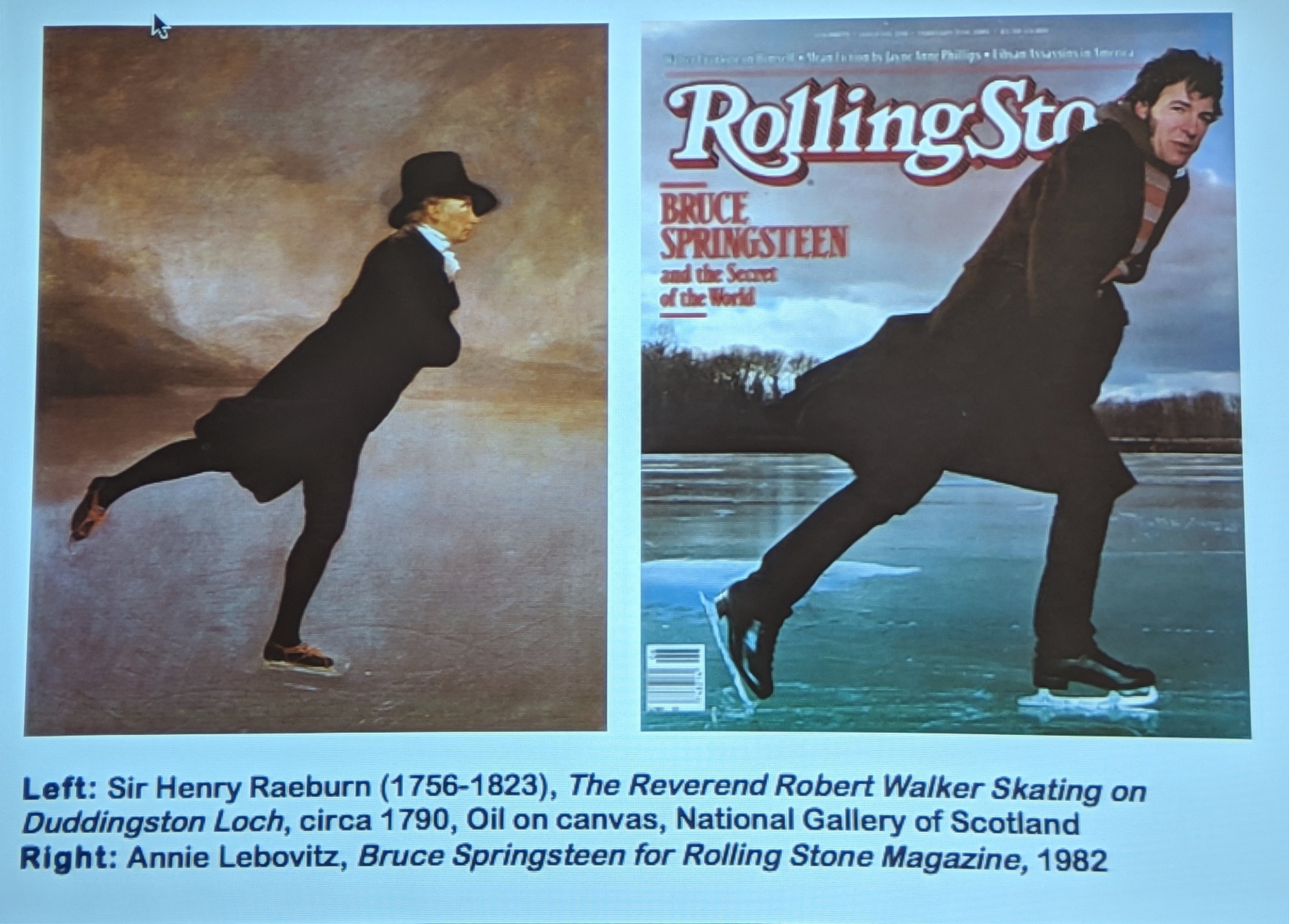This gallery lecture was delivered by Anders Pleass, at Oriel Colwyn on 28th February, in support of their current exhibition of John Hedley's images of rock formations and trees, which are produced using a combination of digital photography with traditional intaglio printmaking. In a wide-ranging presentation, he described his personal journey from an undergraduate in environmental biology to studying fine art and his attempts to take the lessons from his scientific background into painting, incorporating these in a creative model in developing his 'post-painterly abstraction' techniques for making images. As the slide from his talk used as a featured image for this post shows, he has a detailed knowledge of art history and an ability to recognise when artists (and photographers) reference work from the past when researching their ideas for projects. He described in detail his own research into art theory, significantly influenced by the writings of modernist and post-modernist thinkers, notably the visual art critic Clement Greenberg, the philosopher A. J. Ayer and the novelist and art theorist André Malraux. The artists whose work influenced his practice included Morris Lewis, Ian Davenport, Calum Innes and Bernard Frize but in addition to post-painterly abstraction he studied Systems Theory (Humberto Maturana), Chaos Theory (Edward Norton Lorenz) and comparative embryology, Emergence Theory and more general interests including theatre (especially Shakespeare and the Riddle of the Sphinx from Oedipus Rex). The artist he worked most closely with was Brad Lochore, some of whose large paintings of shadows (which I was previously unaware of) are superficially very similar to a series of photographs I have been making over the last two years. Pleass assisted in the making of these paintings for several years as a painter technician and explained that they were based on photographs which were transcribed onto canvas, section by section using a technique which he described as being almost like 'painting with numbers'.
The artist he worked most closely with was Brad Lochore, some of whose large paintings of shadows (which I was previously unaware of) are superficially very similar to a series of photographs I have been making over the last two years. Pleass assisted in the making of these paintings for several years as a painter technician and explained that they were based on photographs which were transcribed onto canvas, section by section using a technique which he described as being almost like 'painting with numbers'. Although his work with Lochore provided an income, he had no artistic input (Lochore never involved him in the creative process or even discussed the images with him) and he went on to talk candidly about the tribulations of trying to establish his own career as an artist and his subsequent transition to his present vocation as a freelance curator. He first met John Hedley in 2014 when they were both teaching in the Arts Department at Coleg Llandrillo and credits Hedley with introducing him to the educational concepts of visual literacy and hermeneutics. He described the working process used by Hedley as 'primordial image formation', images which appear as metamorphoses evolving from the natural world. The two groups of intaglio prints in this exhibition are firstly monochrome images trees in a woodland and secondly the surfaces of rock formations (in Anglesey and Crete). Pleass feels that the real subject of them is 'time', as in ideas of time moving slowly, the timescales of their references to art history and geological time. He also commented on the similarities in some of them to satellite images and aerial photography.My interest in the work and the reason for going to this lecture, was in the process used as an example of a hybrid technique which combining photography with traditional printmaking. While I am still exploring several potential areas for my research project, it will include studying an aspect of the interface between analogue and digital technology (hence the title of my blog). I also have a shared interest in his subject matter having worked with textures in, rock surfaces, tree bark and sand dunes as well as my photographs of shadows, reflected light and paintwork. The additional bonuses of attending this talk were the depth of the contextual background information covered by Pleass and learning about several artists whose work I should now consider. John Hedley is giving his own talk about his working methods in the next few weeks and I hope to be able to get there.
Although his work with Lochore provided an income, he had no artistic input (Lochore never involved him in the creative process or even discussed the images with him) and he went on to talk candidly about the tribulations of trying to establish his own career as an artist and his subsequent transition to his present vocation as a freelance curator. He first met John Hedley in 2014 when they were both teaching in the Arts Department at Coleg Llandrillo and credits Hedley with introducing him to the educational concepts of visual literacy and hermeneutics. He described the working process used by Hedley as 'primordial image formation', images which appear as metamorphoses evolving from the natural world. The two groups of intaglio prints in this exhibition are firstly monochrome images trees in a woodland and secondly the surfaces of rock formations (in Anglesey and Crete). Pleass feels that the real subject of them is 'time', as in ideas of time moving slowly, the timescales of their references to art history and geological time. He also commented on the similarities in some of them to satellite images and aerial photography.My interest in the work and the reason for going to this lecture, was in the process used as an example of a hybrid technique which combining photography with traditional printmaking. While I am still exploring several potential areas for my research project, it will include studying an aspect of the interface between analogue and digital technology (hence the title of my blog). I also have a shared interest in his subject matter having worked with textures in, rock surfaces, tree bark and sand dunes as well as my photographs of shadows, reflected light and paintwork. The additional bonuses of attending this talk were the depth of the contextual background information covered by Pleass and learning about several artists whose work I should now consider. John Hedley is giving his own talk about his working methods in the next few weeks and I hope to be able to get there.
